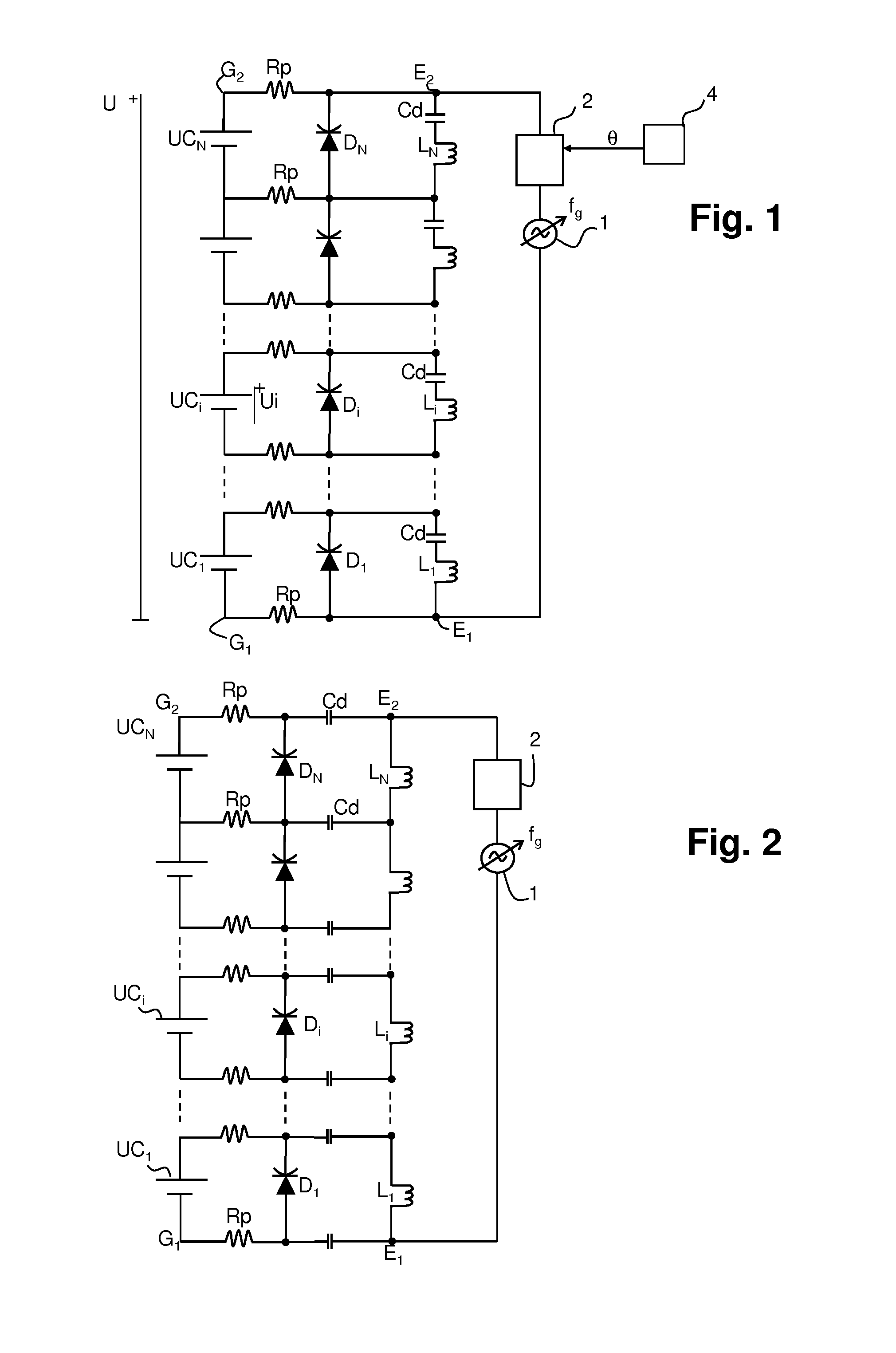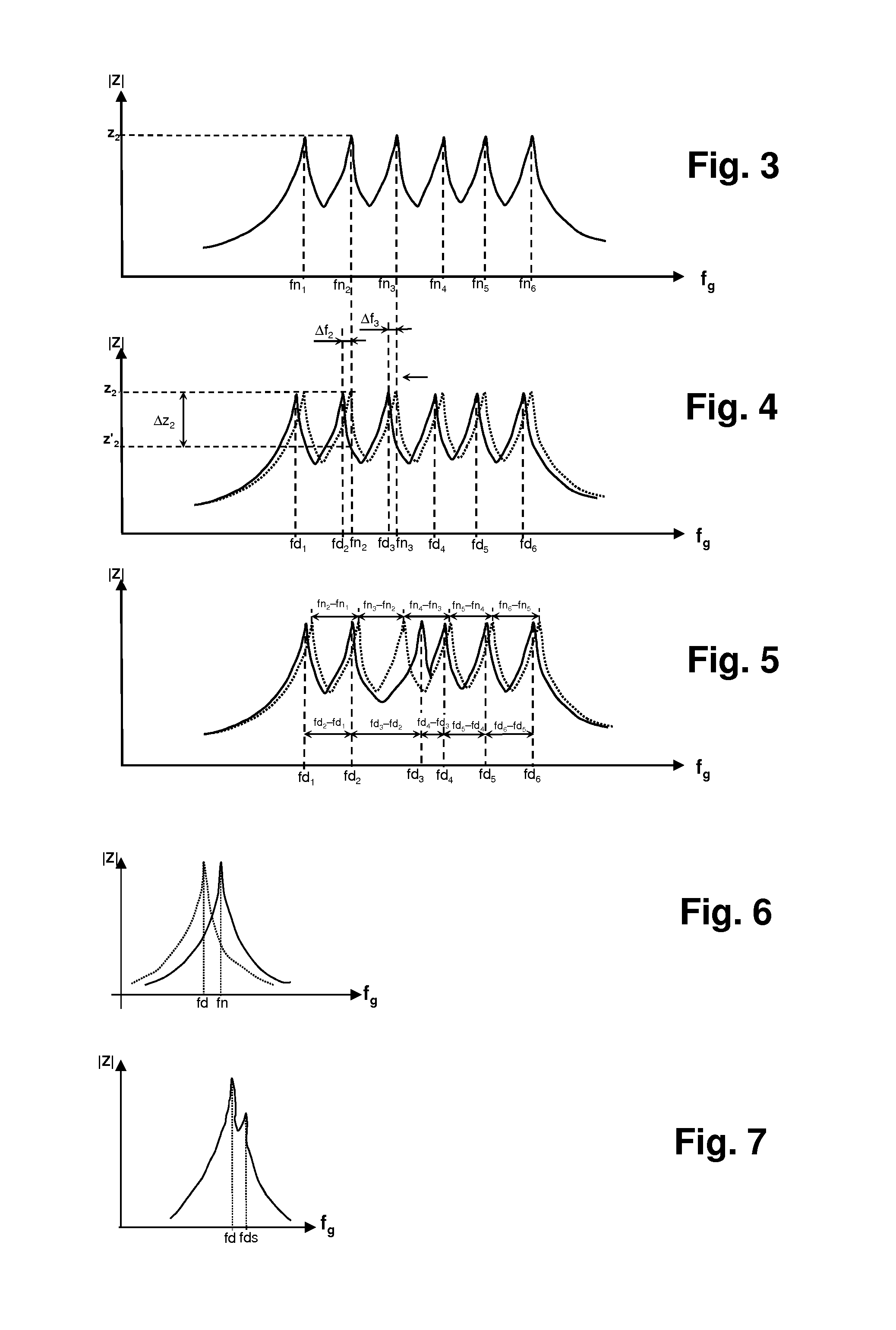Device for monitoring the voltage output by the cells of an electrochemical generator
a technology of electrochemical generators and devices, which is applied in the direction of electrochemical generators, instruments, material analysis, etc., can solve the problems of reversibly or irreversibly degrading or prematurely deteriorating all or some cells, premature ageing or even complete deterioration of one or more cells, and nearly complete discharge of this cell or eventually other cells, etc., to achieve the effect of simple implementation and reliable over tim
- Summary
- Abstract
- Description
- Claims
- Application Information
AI Technical Summary
Benefits of technology
Problems solved by technology
Method used
Image
Examples
Embodiment Construction
[0048]A first embodiment of a control circuit according to the invention is illustrated in FIG. 1, applied to a stack of N cells UC, of an electrochemical generator. Each cell UC, delivers, across its terminals, an elementary DC voltage Ui. Across the terminals G1, G2 of the stack a voltage U equal to the sum of the N elementary DC voltages Ui is obtained.
[0049]The control circuit comprises one resonant circuit per cell UCi. The resonant circuit comprises a first reactive passive component Di and a second reactive passive component Li, connected to the terminals of each cell UCi. The bank of resonant circuits are placed in series. The first reactive passive component is preferably a varicap diode, and the second reactive passive component an inductor. They are each connected in parallel to the cell UCi, as illustrated, forming a parallel LC resonant circuit with the capacitance Ci of the varicap diode and the inductance of the inductor Li. Since the cell UCi ensures the function of ...
PUM
| Property | Measurement | Unit |
|---|---|---|
| voltage | aaaaa | aaaaa |
| voltage | aaaaa | aaaaa |
| voltage | aaaaa | aaaaa |
Abstract
Description
Claims
Application Information
 Login to View More
Login to View More - R&D
- Intellectual Property
- Life Sciences
- Materials
- Tech Scout
- Unparalleled Data Quality
- Higher Quality Content
- 60% Fewer Hallucinations
Browse by: Latest US Patents, China's latest patents, Technical Efficacy Thesaurus, Application Domain, Technology Topic, Popular Technical Reports.
© 2025 PatSnap. All rights reserved.Legal|Privacy policy|Modern Slavery Act Transparency Statement|Sitemap|About US| Contact US: help@patsnap.com



